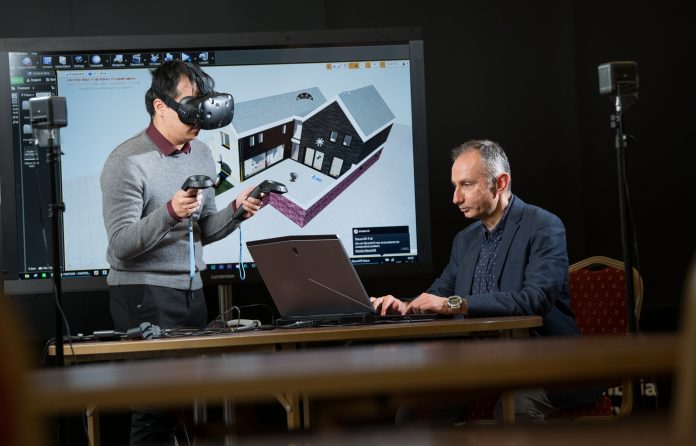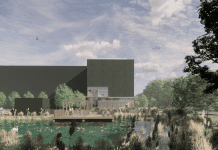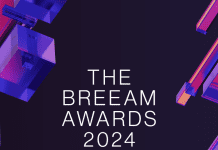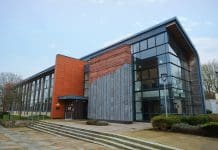The Digital Energy Estimation Tool, a collaboration between the Centre for Digital Built Britain and Northumbria University, is harnessing BIM and VR to visualise embodied and operational carbon emissions in the built environment. Sustainable construction expert Dr Zaid Alwan discusses the development of the tool, which was selected for exhibition at COP26
The building and construction sector is a major contributor to climate change, with approximately 35% of global energy use and 38% of carbon emissions associated with buildings.
The UK has made a commitment to net zero GHGs by 2050 and the architecture, engineering and construction (AEC) sector has a significant role to play in achieving this.
While operational carbon efficiency has received attention from academic and AEC researchers, the concept of whole lifetime energy and carbon has received relatively little consideration, and sometimes embodied carbon is described as the “dark side” of an unregulated factor of carbon in the building and construction industry.
The Digital Energy Estimation Tool (DEET) project uses digital advances such as BIM protocols (see Figure 1) and VR immersive reality to visualise the total energy consumption of a building, both the embodied (the materials used in construction and the processes to manufacture them) and operational (energy used for heating, cooking and powering appliances).
The use of BIM enables better coordination, cooperation and exchange of information among various stakeholders in society. According to the Centre for Digital Built Britain (CDBB), the body appointed by the UK government to enhance digital construction, embracing a digital agenda serves as a platform for competitiveness and productivity, as well as citizen wellbeing. The project was funded by CDBB and Northumbria University.
Digital architecture is the answer to early design decisions
In early design stages, parametric models generally can provide a low Level of Geometry (LOG) compared with BIM models. The Lifecycle Assessment (LCA) and operational assessment are specified according to the level of details provided and the predefined material composition of building elements. Even at this early stage, energy and associated carbon data can be considered to assess the impact on building performance.
DEET offers seamless inclusion of embodied carbon, parametric coding and VR in one analysis approach to enhance building performance, and the ability to prioritise material selection via BIM. This will be the first time that a tool has been able to do this, ie use BIM frameworks, which are becoming the norm in the AEC industry, to give real-time OC and EC data at the design and operational stages.
Building Performance Analysis (BPA) and its integration within BIM will become vial as a way of meeting net zero carbon targets. BIM frameworks are not simply geometrical authoring and execution tools but also are used as a data-rich repository of material type and information on building carbon analysis across the RIBA stages.
Identifying how carbon information is shared across Levels of Development (LODs) is crucial to making key decision on material use at design, construction and even retrofitting. This innovative lifecycle analysis approach utilising BIM (Figure 1) understands and links LOD to the use of the different databases to Global Warming Potential (GWP), which can be key to raising awareness and taking actions on harmful materials in a live, interactive setting.
Crucially, combining both operational and embodied aspects of whole-life carbon analysis can be integrated within one visually stimulating tool. This in itself is not unique from a modelling point of view but the fact that material substitution and live monitoring of carbon can be done in real time makes the process much more fun and engaging for the users.
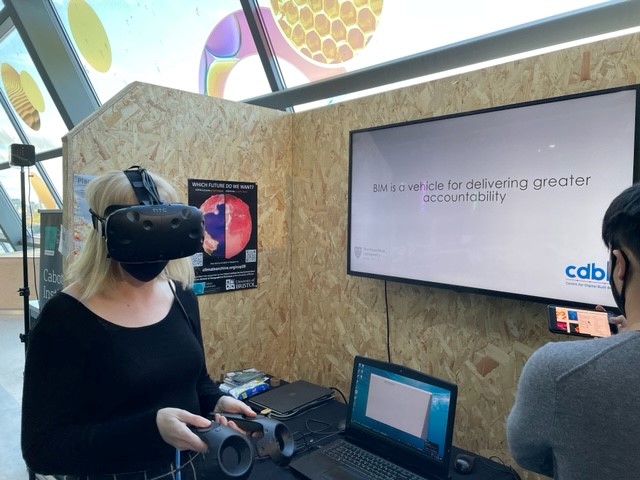
The UK Universities Network and COP26
The COP26 Universities Network is a growing group of over 80 UK-based universities and research centres working together to raise ambition for tangible outcomes from the UN COP26 event.
The DEET project was one of only a few projects to be selected by the Tyndall Centre for Climate Change Research to be displayed at the Green Zone of COP26, under the Energy theme to engage society, in addition to key national and international figures and dignitaries.
Attending COP26 and demonstrating the prototype tool to a variety of stakeholders made a big difference to visitors’ perception of the role buildings play in emitting carbon and what actions we can take to mitigate it.
Coming away from COP26, I realised that transformative technologies such as BIM, digital engineering and advanced building materials are actively marketed as efficiency measures, when in fact they can be pivotal in addressing the problems associated with climate change in the construction sector.
The power of young people and digital adoption
What we need to take away from COP26 is that for this topic to be accepted, it has to be something used in the mainstream. I believe the fact that we are using VR gaming as a hook to get people into understanding and evaluating emissions is huge and very forward-thinking, and I think this was definitely one of the reasons why I was selected by the UK Universities Network to exhibit at COP26.
In addition, this could be a great way of attracting young talent to the construction industry, which is sometimes overlooked as unglamourous and not exciting enough for modern technology adoption.
The VR domain and carbon analysis
There is huge potential for expansion and large-scale adoption if carbon hotspots can be identified and materials substituted at the early phase of projects.
The research team’s next steps will be investigating a range of possibilities of how carbon can be evaluated at an early stage of the BIM process across infrastructure such as mega projects or airports can be captured, from single buildings to using drones to cover a piece of infrastructure like bridges and highways.
Finally, the team would like to create a wider community of understating whole-life carbon analysis of project through a dedicated engagement forum.
Dr Zaid Alwan
Senior lecturer
Department of Architecture & Built Environment
Northumbria University


